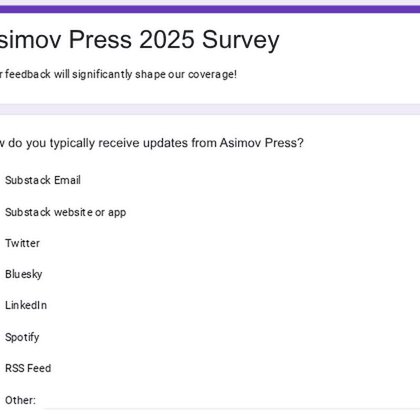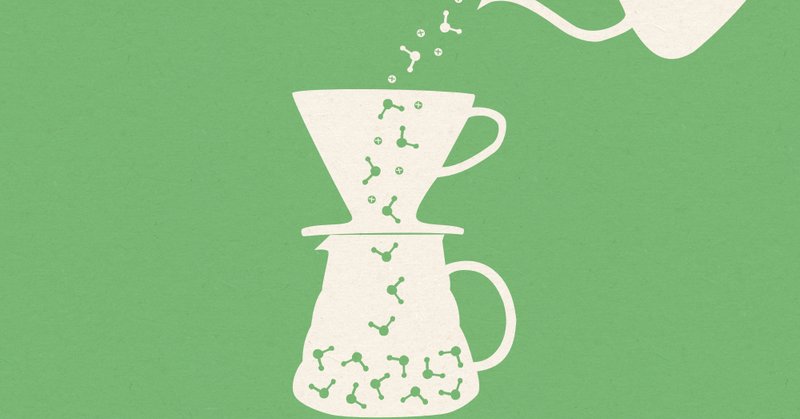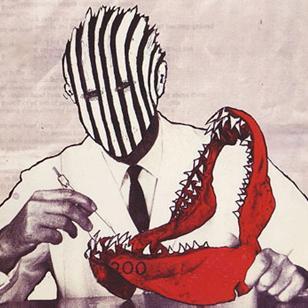
Niko McCarty.
@NikoMcCarty
Followers
43K
Following
15K
Media
934
Statuses
4K
Science. Biology. Progress. Founding Editor @AsimovPress / Subscribe!
Subscribe to Asimov Press
Joined November 2016
This is an ongoing thread for my series, "30 Essays to Make You Love Biology." ❤️🧬 I'll pin it on my profile.
13
130
682
New essay on electron microscopes, an incredible machine fabricated by a long line of brilliant engineers. This bit was surprising to me: "Conceived in the 1930s, [the electron microscope] promised theoretical resolutions on the order of angstroms, nearly a hundred times finer
Electron microscopes are one of the great feats of human engineering. These towering metal tubes, filled with detectors and electromagnetic coils, are used to image the smallest of molecules. Our latest essay by @_SmrithiSunil is a deep dive into the making of these machines.
0
2
27
🚨Interested in the intersection of AI and Engineering Biology? 🤖🧬 If so, come join us in Bristol, UK from 15-16 Jan 2026 for the latest instalment of the "AI, Engineering Biology and Beyond" conference! It's going to be a "banger" and registration open! https://t.co/FG2I1ecaFR
3
5
21
About 55% of all land used to grow genetically-modified crops is in developing countries. In Africa, Nigeria has emerged as a leader in agritech. Cowpea, for example, is a major part of the diet for 200 million Africans, and Nigeria is its largest producer. But when cowpea
2
7
31
This is a really nice blog post! I recommend following @CorinWagen's work.
I attended the 2025 Progress Conference and had a lot of interesting conversations about agentic AI for science, which prompted me to write down some thoughts I've been developing on this topic. Here's seven thoughts on the future of "AI scientists":
2
2
20
Our latest collaborative paper with David Baker's lab is now live in Cell Biomaterials (@CellBiomat, Cell Press)! Check out "Stimuli-triggered Formation of De Novo-designed Protein Biomaterials"! 🔓 : https://t.co/GSSJPePbgX
1
41
228
Scientists often engineer microbes, like E. coli, to make drugs and other molecules. But what if, instead, we could isolate ALL the components of a cell into little vials and sell them? How much would, say, 1 liter of cells be worth? The answer, it turns out, is about $600,000.
2
12
39
If you like this, then you may like the articles we publish over at Asimov Press! https://t.co/mnGw0DY3HM
press.asimov.com
Asimov Press publishes an online magazine and books about scientific progress, especially in biology, and features writing from some of the world's foremost thinkers.
0
2
8
If you like this, then you may like the articles we publish over at Asimov Press! https://t.co/mnGw0DY3HM
press.asimov.com
Asimov Press publishes an online magazine and books about scientific progress, especially in biology, and features writing from some of the world's foremost thinkers.
0
2
4
One source here: https://t.co/Cep0HA6ZZf / Motor efficiencies vary across microbes.
pmc.ncbi.nlm.nih.gov
We determined the torque of the flagellar motor of Caulobacter crescentus for different motor rotation rates by measuring the rotation rate and swimming speed of the cell body and found it to be...
0
2
4
Many flagella use flowing protons to power their movements. Protons flow through "stator" proteins, causing them to shapeshift and nudge on a driveshaft, which spins the tail. The motor is nearly 100 percent efficient at converting energy from protons into mechanical work (at
6
27
232
Many of the mouse strains commonly used in laboratories can be traced back to "fanciers," or people who bred mice just for fun. Mouse fancying probably originated in Asia, most likely China, and grew to popularity in the 1700s in Japan, where varieties named for their fur
3
4
39
A structure for myoglobin was uploaded to the PDB when it launched in 1971. A low-resolution structure of the flagellar motor came in 2006. By 2020, we got the entire flagellar motor, with its hundreds of proteins, at high resolution. So much progress in only 50 years. (Not
4
30
233
We're planning to scale up next year, with lots more articles and multimedia formats (and books). We'd love to hear from you before then. What articles do you like, what do you not like, and how can we do better? 1-minute survey:
docs.google.com
Your feedback will significantly shape our coverage!
1
4
34
If you like this, then you may like the articles we publish over at Asimov Press! https://t.co/mnGw0DY3HM
press.asimov.com
Asimov Press publishes an online magazine and books about scientific progress, especially in biology, and features writing from some of the world's foremost thinkers.
0
1
9
My new essay is about atomic-scale protein filters. Briefly: Cells are crowded and frenzied places. Molecular machines convert raw inputs into highly ordered structures; DNA coils into chromosomes and proteins fold into precise three-dimensional shapes. Outside the cell, by
9
40
287
The Protein Hunter work is super interesting. They appear to skip a bunch of steps in binder design by simply feeding a list of Xs (i.e., no specific aa) as input into Boltz/AF3/etc. This results in a hallucination that is a good starting point for cycling with ProteinMPNN!
Protein Hunter: Starting from an all "X" sequence, we find that diffusion-based structure prediction models can hallucinate reasonable looking structures, which can be further improved through iterative sequence design and structure prediction, similar to AF2Cycler and LASErMPNN.
0
7
101
If you like this, then you may like the articles we publish over at Asimov Press! https://t.co/mnGw0DY3HM
press.asimov.com
Asimov Press publishes an online magazine and books about scientific progress, especially in biology, and features writing from some of the world's foremost thinkers.
1
0
4
Brian Potter is one of my favorite writers, so I'm really excited to dig into this. Also, @stripepress is on a roll. And their designs have me thinking about how aesthetics expand the surface area of ideas. Many of these books are not light reading. They are written for the
3
15
346
If you like this, then you may like the articles we publish over at Asimov Press! https://t.co/mnGw0DY3HM
press.asimov.com
Asimov Press publishes an online magazine and books about scientific progress, especially in biology, and features writing from some of the world's foremost thinkers.
0
1
6










